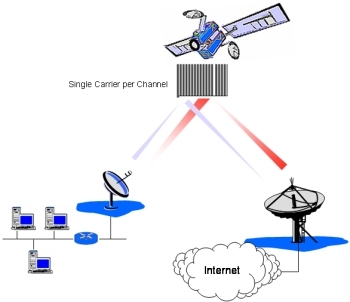In Starbucks stores, customers can shop for music wirelessly through iTunes for FREE!!! wwooowww..
NIC : is a computer hardware component that connects a computer to a computer network
*also known as a network interface card, network adapter, LAN adapter and by similar terms
NOS :an operating system that includes special functions for connecting computers and devices into a local area network (LAN). Some operating systems, such as UNIX and the Mac OS, have networking functions built in. The term network operating system, however, is generally reserved for software that enhances a basic operating system by adding networking features. Novell Netware, Artisoft's LANtastic, Microsoft Windows Server, and Windows NT are examples of an NOS.
NIC : is a computer hardware component that connects a computer to a computer network
*also known as a network interface card, network adapter, LAN adapter and by similar terms
NOS :an operating system that includes special functions for connecting computers and devices into a local area network (LAN). Some operating systems, such as UNIX and the Mac OS, have networking functions built in. The term network operating system, however, is generally reserved for software that enhances a basic operating system by adding networking features. Novell Netware, Artisoft's LANtastic, Microsoft Windows Server, and Windows NT are examples of an NOS.
Types of network:
· Local Area Network (LAN)
-design to connect designed to connect a group of computers
in close proximity to each other such as in an office building, a school, or a
home. A LAN is useful for sharing resources like files, printers, games, or other applications.
A LAN in turn often connects to other LANs, and to the Internet or wide area
networks
· Metropolitan Area Network (MAN)
-a large computer network usually spanning a city
· Wide Area Network (WAN)
-spans a large geographic area, such as a state,
province, or country. WANs often connect multiple smaller networks, such as local area networks or metropolitan area networks (MANs)
· Personal Area Network (PAN)
i. Terminal/workstation (end nodes)
-refers to the data SOURCE & DESTINATIONS
-refers to the data SOURCE & DESTINATIONS
-almost any computer can serve as anetwork workstation
-e.g: personal comp, terminals, workstations, computers, ATM
-e.g: personal comp, terminals, workstations, computers, ATM
Transmission media
environment
-transmit signal/electrical pulse
-types:
1) bounded/guided-through cable (fibre optic cables, wire & etc)
2) unbounded/unguided-through vacuum (AM & FM radio,TV,satellite & etc.)

AM: Amplitude Modulation is a technique used in electronic communication, most commonly for transmitting information via a radio carrier wave. AM works by varying the strength of the transmitted signal in relation to the information being sent.
FM: Frequency Modulation conveys information over a carrier wave by varying its instantaneous frequency.Digital data can be sent by shifting the carrier's frequency among a range of settings, a technique known as frequency-shift keying.
Network electronic devices
-devices that controls data transmission from source to destinations
-interface between different transmission media
-e.g: bridges, concentrators, routers, hubs & etc
-interface between different transmission media
-e.g: bridges, concentrators, routers, hubs & etc
BRIDGE
· Connect multiple network segments.
DATA ROUTING
· Translate information from one network to another
· Select the best path to route a message, based on the destination address origin.
· Preventing head-on collisions (direct signal traffic efficiently)
· Able to route messages between linear bus, star, & star-wired ring topologies.
Software
-present on all networked computers and is responsible for controlling network activities and functionality
-involve techniques and protocol which determine the procedure of transfering, defining, presenting and also controlling the data.
v. Network Architecture Standards
-blueprint of standards for a network consisting of items such as choice of media,media interfaces, encoding methods, transmission protocols, routing protocols and other techniques.
- it is important to ensure interoperability between various devices and equipment made by different vendors.
Do you know that??!….NETWORKING is widely use in our daily life. It make our life, our communication, our programme run smoooootthhhllyyy.. 0.o
Companies
· Use networking as resource/information sharing through all the connections without any distruption.
· It is accessible at anytime
· High reliability
· Scalability depends on the demands
· Manageability-allow remote resources to be managed effectively
· Cost effectiveness.
Individu
· Database access
Eg: E-shopping, Online news paper, Digital libraries, etc.
· Facilitate communication between individuals
Eg: E-mail, video conferencing, Online learning, etc.
· Interactive entertainment.
Eg: multimedia games
*before leave out...dun forget ur cup of coffee n tea! It could make clouds move away...giving space for the SUN to SHINE.. =)
No comments:
Post a Comment